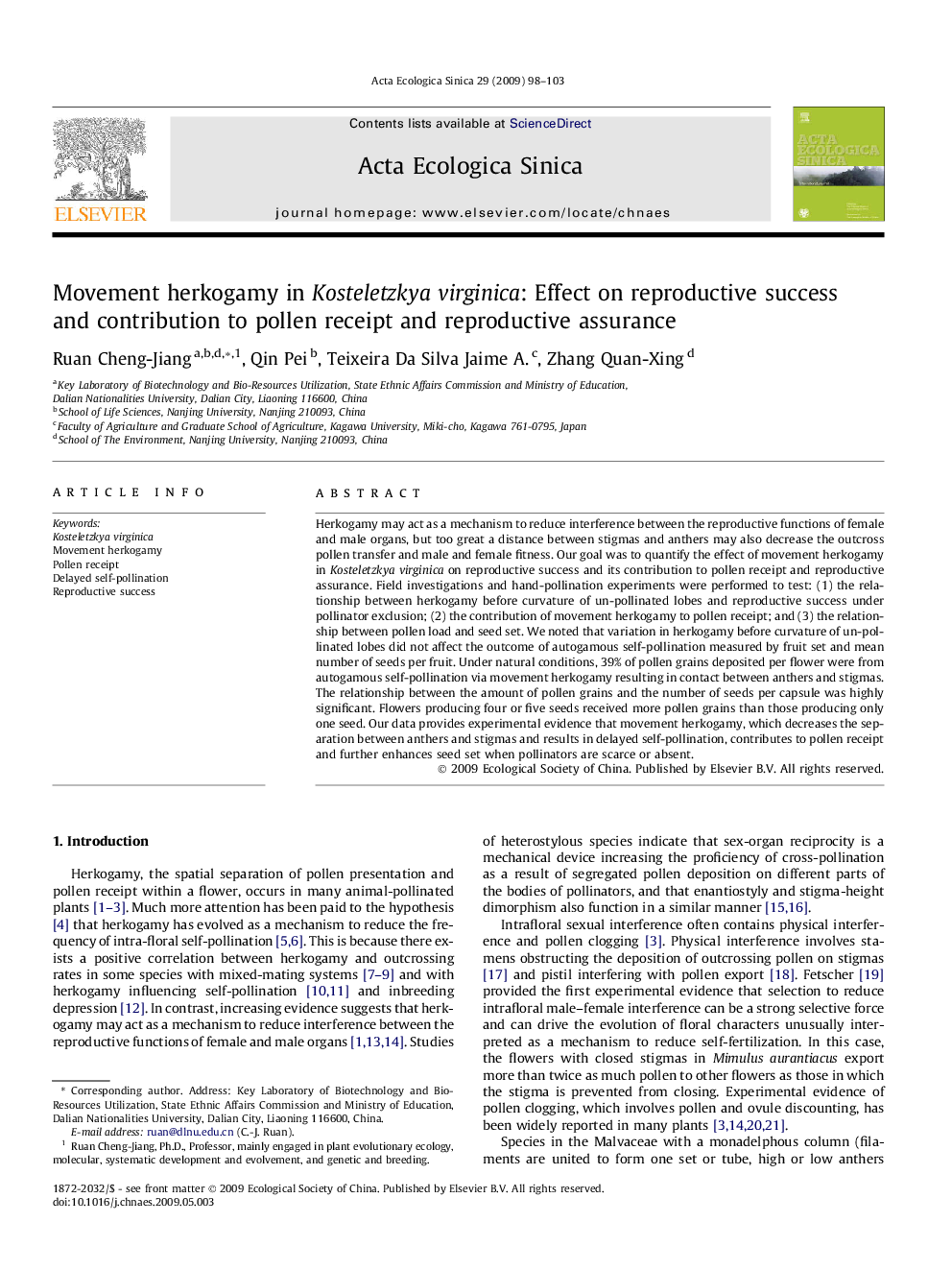| Article ID | Journal | Published Year | Pages | File Type |
|---|---|---|---|---|
| 4380154 | Acta Ecologica Sinica | 2009 | 6 Pages |
Herkogamy may act as a mechanism to reduce interference between the reproductive functions of female and male organs, but too great a distance between stigmas and anthers may also decrease the outcross pollen transfer and male and female fitness. Our goal was to quantify the effect of movement herkogamy in Kosteletzkya virginica on reproductive success and its contribution to pollen receipt and reproductive assurance. Field investigations and hand-pollination experiments were performed to test: (1) the relationship between herkogamy before curvature of un-pollinated lobes and reproductive success under pollinator exclusion; (2) the contribution of movement herkogamy to pollen receipt; and (3) the relationship between pollen load and seed set. We noted that variation in herkogamy before curvature of un-pollinated lobes did not affect the outcome of autogamous self-pollination measured by fruit set and mean number of seeds per fruit. Under natural conditions, 39% of pollen grains deposited per flower were from autogamous self-pollination via movement herkogamy resulting in contact between anthers and stigmas. The relationship between the amount of pollen grains and the number of seeds per capsule was highly significant. Flowers producing four or five seeds received more pollen grains than those producing only one seed. Our data provides experimental evidence that movement herkogamy, which decreases the separation between anthers and stigmas and results in delayed self-pollination, contributes to pollen receipt and further enhances seed set when pollinators are scarce or absent.
